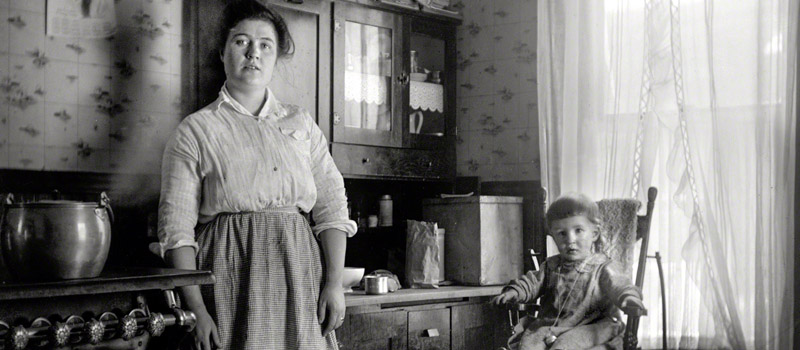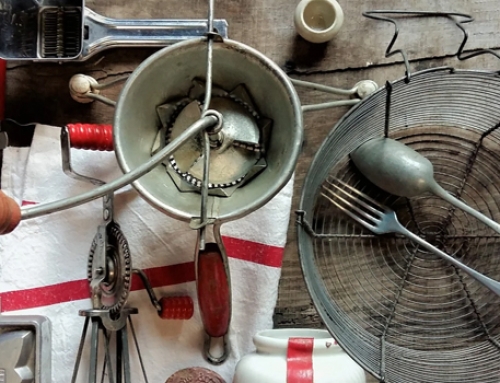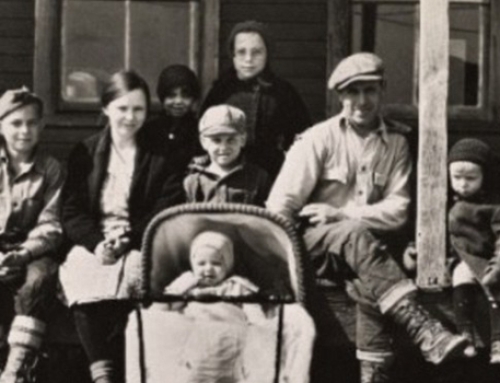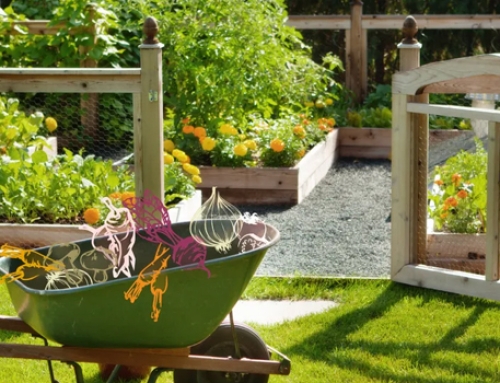Long-Lasting Recipes from Grandma
Now my Grandma Collins was a prolific cook. And a few of those recipes are found here. But I have also gathered other recipes from the past that other grandmas have passed along. They are not fancy. But, most of them also don’t require hard to obtain and expensive ingredients either.
Some of them you can eat for a week, while others you can store for months…maybe even years. Below you will find the recipes.
Breads, Grains, and Other Carbs
There are a lot of recipes for loaves of bread or crackers, and the use of grains. Some are good for longtime storage, while others are a good source of food for a week or so, depending on how many you make, and how you store them.
Grandma’s Wartime Loaf
There is nothing like a warm loaf of bread served with dinner. Bread can be used for almost anything with most anything. here is a way to make and bake bread on the cheap.
This recipe makes 2 large loaves or 4 small.
* 600 ml (1 pint) of warm water
* 5 teaspoons of quick rise yeast
* couple pinches of sugar
* 2 lb of wholewheat (wholemeal) flour
* 1.5 teaspoons salt
* 1 tablespoon rolled oats (for the top)
* spoonful of butter or margarine (or a drizzle of vegetable oil)
Method
Place flour in a large bowl
Mix in all dry ingredients except the rolled oats
Add fat (or drizzle in vegetable oil)
Pour in warm water
Mix thoroughly
When the dough comes together knead for 10 minutes until the dough is silky
Place back in bowl and cover
Let dough rise somewhere warm until doubled in size
Knead the dough briefly again
Place dough into 4 x 1/2 lb tins (or 2 x 1 lb tins) that have been floured
Brush top with a little water and sprinkle on some rolled oats
Leave to rise for around 20 minutes
Place in oven at 180 0C for around 30-40 mins (depending on the size of the loaf)
Remove from oven
Cool for at least 15 minutes before cutting
PS Note that the original recipe called for old fashioned yeast but I replaced it with quick rise yeast (it simply is very hard to get hold of those little squares of yeast that would have been used)
Bannock
Now, most haven’t heard of Bannock. That notwithstanding, it does have a long history. It’s believed to have been brought to North America by the Scottish. In the land of kilts and cardigans, bannock was cooked over an open fire on a bannock stone. Once in North America, the love of bannock spread quickly. Indigenous tribes from coast to coast adapted the method and created their own versions of this long-lasting food.
Today, many of those who travel the less occupied areas of this globe, rely on bannock to accompany their meals. It’s easy to prepare before heading out, and simple to cook over a campfire. This portability makes bannock a wonderful addition to your survival storage activities.
The ingredients of bannock are very similar to those of hardtack. Like hardtack, you can make a simple bannock out of just flour and water. However, to get the best-tasting bannock, you’ll want to add a few additional ingredients.
The Scots traditionally used flour made of oats. As the recipe grew in popularity in North America, cornmeal and wheat flour were used. Obviously, bannock works with a variety of flours. So use what your body can tolerate, and what you can easily keep. Besides water and flour, you can add some additional items to improve the taste of your bannock. Here are a few common additions, and how much to use of each.
To keep your bannock light instead of dense, add baking powder to your flour. A teaspoon for every cup of flour is an appropriate amount. Adding salt improves the flavor of the final product. Use ½ teaspoon of salt for every cup of flour. Cutting a tablespoon of fat for every cup of flour into the dry ingredients helps improve the taste and texture of your bannock. If you use shelf-stable fat like lard or shortening, you’ll still be able to store your dry mix for several months at a time.
You can adapt the recipe to use what you have on hand, which makes this bread an ideal survival food. Here’s a tasty version of the recipe. It created a flavorful bread when baked, pan-fried, or cooked over an open fire.
For each batch, you’ll need:
- 1 cup of white wheat flour
- 1 tsp. baking powder
- ¼ tsp. salt
- 1 TSB. unrefined coconut oil
You’ll also need some water when you’re ready to cook the bannock.
Begin by preparing the dry ingredients. I mixed them in a small bowl and used a fork to incorporate the oil. My end mixture looked a lot like commercial Bisquick or other baking mixes.
Once you’ve prepared your bannock mix, you can store each batch in a sealable bag. Throw a couple of these bags into your bug-out bag, along with a bottle of water, so you can always be ready to make bread.
Once mixed together, and you are out in the woods, you have several ways you can cook it. 1) Wrap it around a good sturdy stick and cook it like you would a marshmallow 2) Pan fry it. Spread it out in the pan and cook it thoroughly 3) Oven bake it. Solar or otherwise cook it well on both sides 4) Over an open fire. Anything that you can have a flat surface over the fire and be able to spread it over it for even cook of the bread.
The shelf life of your bannock mix will depend on what ingredients you include, and how you store it. A basic mix with flour, baking powder, salt, and oil will last at least a couple of months when stored in a sealed plastic baggie. If you remove the oil, the mix would have a longer shelf-life.
Mixing up a batch of bannock mix takes just a couple of minutes. You won’t have a large time-commitment ensuring you always have a fresh batch on hand.
If you’re storing plastic baggies in your bug-out bag, or even just for a camping trip, be sure that they aren’t going to get punctured. You might consider keeping the smaller bags inside a stronger, larger freezer bag to offer more protection.
Once your bannock is cooked, you can keep it for several days. That means you can cook up a big batch and use it to help give you strength if you’re on the move to another bug-out location. You’ll notice the texture will change a bit as the bannock dries out, but it’ll still taste fine.
Want to learn how our Grandparents survived through the Great Depression? Keep on coming back!






